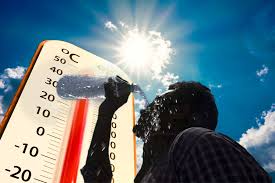Introduction
As climate change drives hotter summers and more frequent heat waves, excessive heat alerts have become a vital tool for protecting public health. These alerts, issued by meteorological and health agencies, warn communities about dangerous temperatures that can lead to serious illness or even death. Understanding what these alerts mean and how to prepare for them is key to staying safe during extreme weather events.
What Is an Excessive Heat Alert
An excessive heat alert is a warning issued when temperatures are expected to rise to dangerous levels for a prolonged period. Typically, these alerts consider both temperature and humidity, as high humidity reduces the body’s ability to cool itself through sweating. Agencies may issue different levels of alerts—such as watches, warnings, and advisories—depending on the severity of the forecast.
-
Heat Advisory: Conditions are uncomfortable and may pose risks for sensitive groups.
-
Excessive Heat Watch: Dangerous heat is possible within the next 24 to 48 hours, urging people to prepare.
-
Excessive Heat Warning: Extreme heat is imminent or occurring, and protective action is necessary immediately.
Why Excessive Heat Alerts Matter
These alerts are not just weather updates; they are life-saving warnings. Heat-related illnesses such as heat exhaustion and heat stroke can escalate quickly, especially among vulnerable populations like older adults, children, and those with chronic conditions. Alerts give communities the time to prepare, check on neighbors, and implement safety measures before conditions become critical.
Health Risks During Excessive Heat
The human body relies on sweating to regulate temperature. During excessive heat, especially with high humidity, this natural cooling system becomes less effective. Risks include:
-
Heat exhaustion: Symptoms include fatigue, dizziness, and heavy sweating.
-
Heat stroke: A medical emergency characterized by confusion, rapid pulse, and dangerously high body temperature.
-
Dehydration: Loss of fluids leads to headaches, weakness, and impaired concentration.
-
Aggravation of chronic illnesses: Conditions such as asthma, diabetes, and heart disease may worsen in extreme heat.
How to Prepare for an Excessive Heat Alert
Stay Hydrated
Drink plenty of water throughout the day. Avoid alcohol and caffeine, as they can accelerate dehydration.
Stay Indoors During Peak Heat
Plan outdoor activities for early mornings or evenings when temperatures are cooler.
Keep Homes Cool
Use air conditioning, fans, or create cross-ventilation by opening windows at night. Close curtains or blinds during the day to block heat.
Dress Appropriately
Wear lightweight, light-colored, and breathable clothing. Hats and sunglasses offer extra protection when outdoors.
Check on Vulnerable People
Ensure that elderly relatives, young children, and those with chronic conditions are safe, hydrated, and cool.
Know Cooling Centers
Many communities open public cooling centers during heat waves. Find out in advance where they are located and how to access them.
Conclusion
Excessive heat alerts are critical tools designed to keep people safe during dangerous weather conditions. By understanding their meaning and taking proactive measures, individuals and communities can reduce the risks associated with extreme heat. Preparation—such as staying hydrated, keeping cool, and looking out for vulnerable populations—can save lives. For trusted health updates and the latest resources on safety and wellness, yeemanews.com offers valuable information to help individuals and communities stay resilient during excessive heat events.







